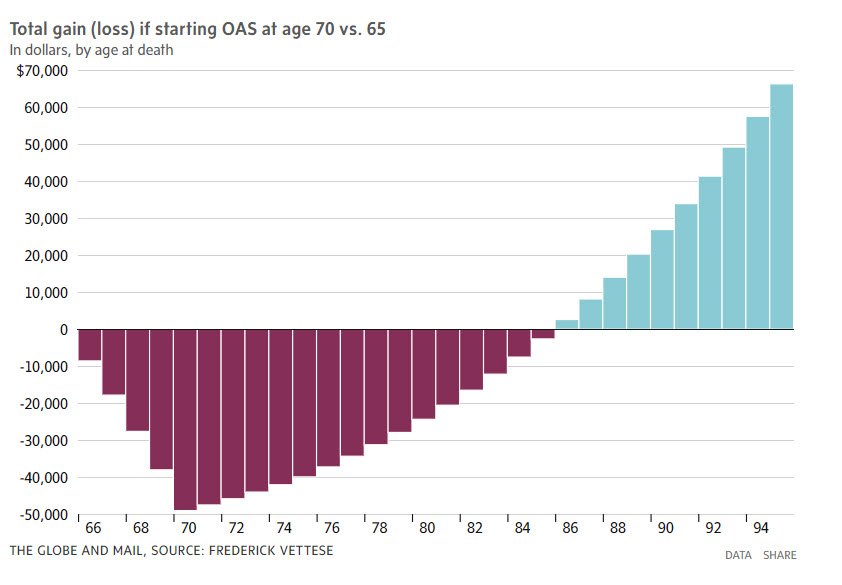
As with CPP, you can start your OAS pension at 70 instead of 65 to receive a larger monthly payment. But is this a good idea? The analysis is similar to deciding whether to defer your CPP pension, but with some crucial differences.

iStock-1413566449.jpg
The first difference is in the size of the increase in pension for waiting until 70. In the case of the Canada Pension Plan, the payments are about 42 per cent greater if you start receiving them at 70 versus 65. I say “about” because the maximum CPP pension continues to grow at the pace of wage inflation until the pension starts, rather than price inflation. There have been years when the bump in CPP has been more than 50 per cent and other years when it has been less than 40 per cent.
In the case of OAS pension, the adjustment is always exactly 36 per cent. Clearly this is less generous than what the CPP offers and given that so few people choose to defer CPP pension beyond 65, you might think that the case for deferring OAS is rather weak. And while it is a little weaker, it still makes sense for many people. Consider this chart.

Assume that a 65-year-old male retiree starts his OAS pension in 2023 and saves all his OAS pension cheques with interest at 4 per cent a year. He then compares that accumulation with how he would have done if he had waited until 70 to start OAS.
By 70, he will have accumulated $49,000 versus $0 if he had decided to wait until 70. After 70, the gap between the two scenarios starts to diminish but it still remains better to start OAS at 65 right up until when the retiree is 85. By 86, however, the retiree would be better off having started OAS at 70.
Based on this longevity “horse race,” you might think it is better to start OAS at 65 but we need to weight the “over/under” scenarios by their respective probabilities. The probability of a male dying between 65 and 86 is 35 per cent. This means that male retirees are better off 65 per cent of the time waiting until 70 to start OAS. (In calculating this probability, I am using the Canadian Pensioners’ 2014 Mortality Table with mortality improvements to 2023 plus something called a “size adjustment” to further modify mortality rates; the data shows that retirees with higher incomes tend to live longer.)
In the case of a female retiree, the case for deferring OAS to 70 is even stronger. The break-even age is still 86, but the probability of a female dying between 65 and 86 is just 30 per cent. The other 70 per cent of women would be better off waiting until 70 to start their OAS pensions.
Whether the retiree is male or female, they would of course need to be able to tap other sources of income if they are considering the option of postponing OAS. Usually, this means drawing down their RRSP or TFSA assets sooner and quicker than they would otherwise. This is something few people like to do, which goes a long way to explaining why so few retirees defer either OAS or CPP pensions beyond 65.
While not shown in the chart, one other condition must be in place if starting OAS pension at 65 is to make any sense. It is imperative that the person’s pension not be clawed back between 65 and 70. For the July, 2022, to June, 2023, payment period, OAS income starts to get clawed back by the CRA when income exceeds $79,845. You would get no OAS benefit at all in that period if your income exceeds $129,757.
There is another reason for opting to take OAS later. It reduces investment risk, longevity risk and inflation risk. Investment risk is reduced because more of your overall income is immune to the ups and downs of the stock markets. Longevity risk is reduced because the bigger OAS pension will be payable no matter how long you live.
Finally, inflation risk is reduced because OAS pension is fully indexed to inflation and a bigger OAS pension means more protection from inflation. This might have been a minor consideration before the pandemic when inflation appeared to be dead but we now know better. Even if inflation returns to the 2-per-cent level does anyone really think it will stay there forever?
Comments are closed.
